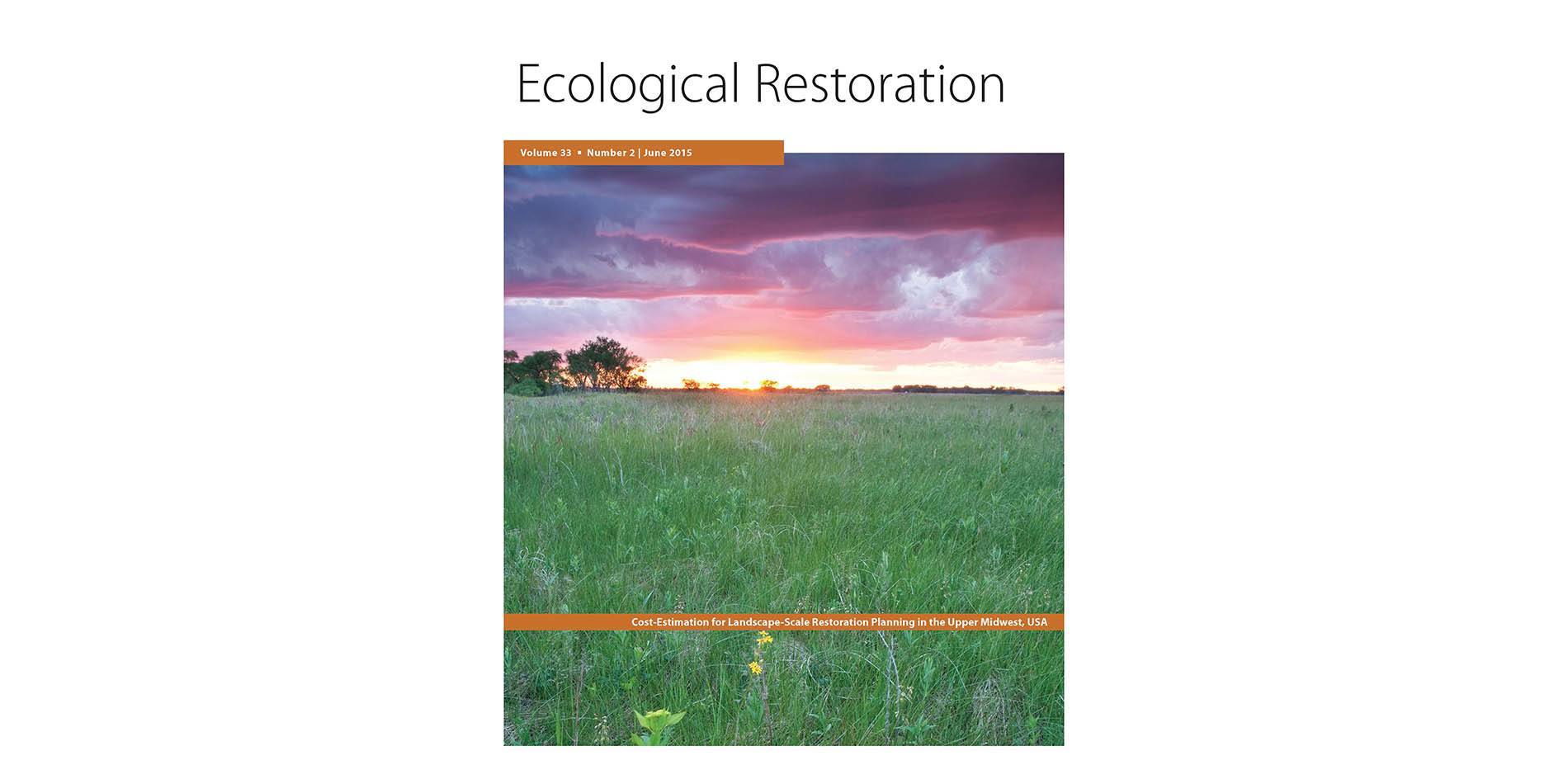
Cost-Estimation for Landscape-Scale Restoration Planning in the Upper Midwest, USA
Photo Credit: Rutgers University
Media: Please submit high-resolution image requests to images@asla.org.
Construction of new oyster reefs may help water quality, food webs, and involve local citizens in harbor health (SCAPE, designers). Ecologists challenged the ability of constructed supports to last in storm surges and for oyster reef formation to remove pollutants from the food web; more research is needed.
Photo Credit: Rutgers University
Media: Please submit high-resolution image requests to images@asla.org.
Proposed highway crossing. Winning design by MVVA and HNTB uses modular construction units that can adapt for many size roads and landforms, minimizing local disturbance. Ecologists asked whether crossing frequencies could actually be enhanced and with greater attention to invertebrate habitats.
Photo Credit: Rutgers University
Media: Please submit high-resolution image requests to images@asla.org.
Proposed highway crossing. Habitats on the structure connected with surrounding matrix with undulating landforms and use locally sourced timber as an aide to carbon storage (Balmori and Skelly, designers). Ecologists worried that the treat-wood might discourage wildlife passage.
Photo Credit: Rutgers University
Media: Please submit high-resolution image requests to images@asla.org.
Proposed highway crossing. Side barriers aim to attenuate sound from the traffic, encourage wildlife use; multiple routes are proposed to increase animal movements (Rosenberg and Justewicz, designers). Ecologists wondered why only animal behavior was considered, not changing the behavior of motorists who pass under the structure.
Photo Credit: Rutgers University
Media: Please submit high-resolution image requests to images@asla.org.
Proposed highway crossing. Bird perches inside the Rosenberg and Justewicz design add feeding and rest niche space to the design.
Photo Credit: Rutgers University
Media: Please submit high-resolution image requests to images@asla.org.
Proposed highway crossing. A water channel draws wildlife on to this formwork structure, countered the negative effects of narrow pace and traffic noise (Zwarts & Jansma, OKRA, In-Infra, and Jansen Plan, designers). Ecologists question whether the design details are appropriate for the specific species expected to cross.
Photo Credit: Rutgers University
Media: Please submit high-resolution image requests to images@asla.org.
The “Marine Street” design allows for native plantings and changing water levers at former dead-end roads, increase habitat space and public open space (W-Architecture, designers). Cross section allows for storm water to collect and be cleaned before entered the marine environment.
Photo Credit: Rutgers University
Media: Please submit high-resolution image requests to images@asla.org.
Brooklyn Bridge Park (MVVA, designers). A former commercial waterfront is transformed with new marine habitats and public walkways over the river. Ecologists questioned the effect of walkways on submarine habitats but praised the addition of marine invertebrate niche space.
Photo Credit: Rutgers University
Media: Please submit high-resolution image requests to images@asla.org.
Giant Clam Shells, the Intermediate Disturbance Hypothesis, and a Big Box of Markers
Photo Credit: Rutgers University
Media: Please submit high-resolution image requests to images@asla.org.
Giant Clam Shells, the Intermediate Disturbance Hypothesis, and a Big Box of Markers (cont.)
Photo Credit: Rutgers University
Media: Please submit high-resolution image requests to images@asla.org.
Marriage Therapy for Ecologists and Landscape Architects
Photo Credit: Rutgers University
Media: Please submit high-resolution image requests to images@asla.org.
Marriage Therapy for Ecologists and Landscape Architects (cont.)
Photo Credit: Rutgers University
Media: Please submit high-resolution image requests to images@asla.org.
















